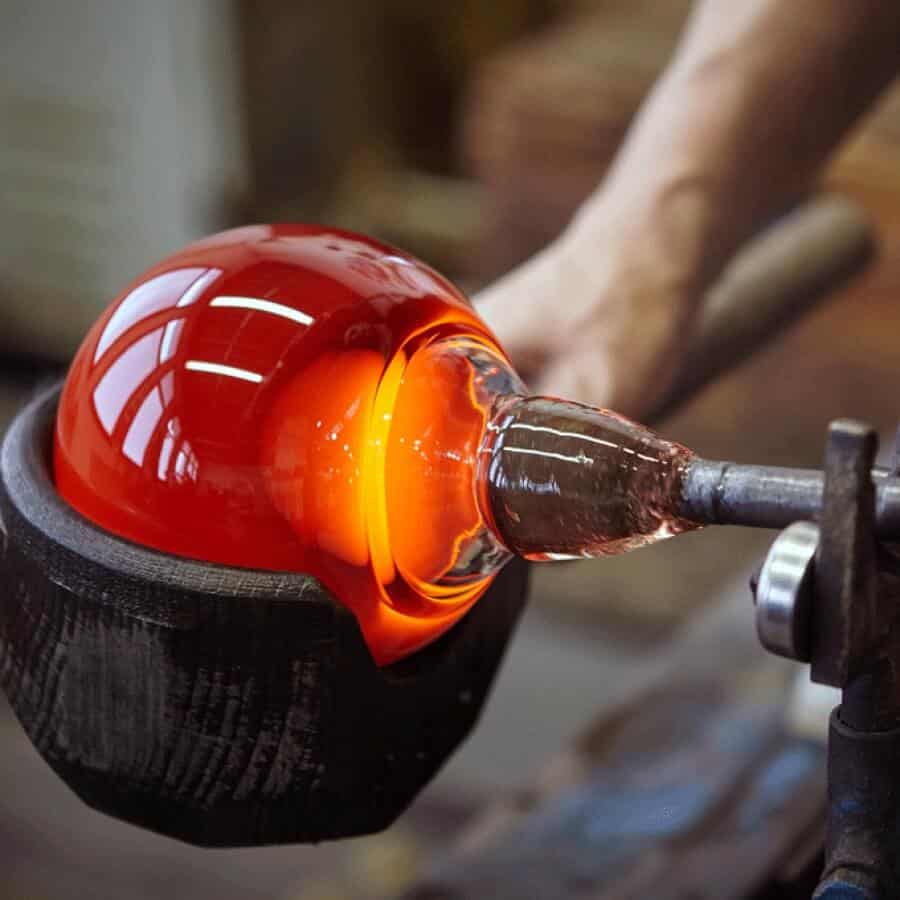It all started in a very ordinary way – lightning struck siliceous sand, and the result was a fulgurite – a predecessor of today´s glass. That extremely simplified version of glass manufacturing does, however, include the essentials. The process of melting and the subsequent cooling of the enamel does correspond with the original substance. The production of glass is an appealing craft with a process that is worth seeing – check out our photoproject.
Glass manufacturing was discovered in ancient times and reached its peak in the Middle Ages, when many illustrious workshops were in operation. The initial products were created by different methods, for example pulling out the glass fibre and wrapping it around a clay core. The first people to use the blowpipe were probably the Phoenicians (cca 1500 – 300 BC).
Blowing the glass allows the glass masters to create final shapes either by free-blowing or mold-blowing.
The temperature of lightning is 20 000 C, while the melting point of glass is between 500 ° C and 1650 ° C, depending on the type of glass and its content.
Broadly speaking, there are three phases to melting glass:
- Fusing – the mixture of the ingredients is melted by increasing the temperature in the furnace. The temperature varies depending on the type of the glass.
- Purification and homogenization – two phase taking place simultaneously, in which the gas bubbles are removed from the mixture. At this point the glass melt reaches the peak temperature and the viscosity is the lowest. The temperatures at this point are usually between 1400 and 1500C.
- The last step is to decrease the temperature to appoximately 1200 C – the point at which the viscosity increases and the glass melt is suitable for casting and hot forming.
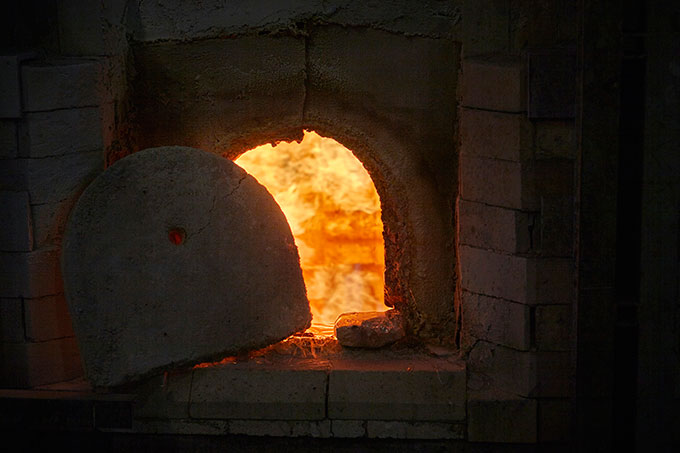
View into the furnace during the glass melting phase
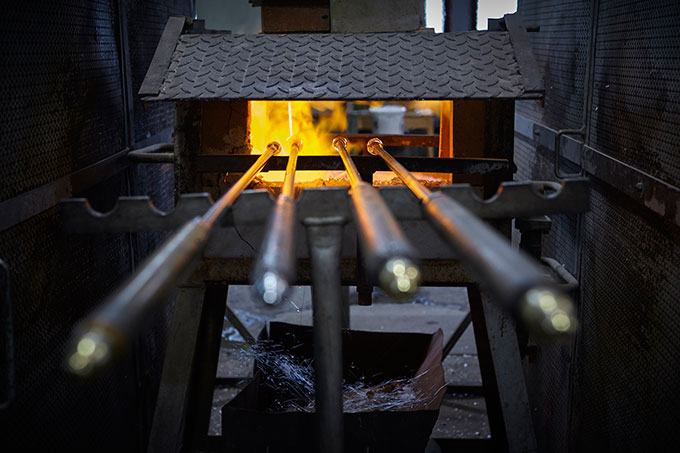
Blowpipes in the work station
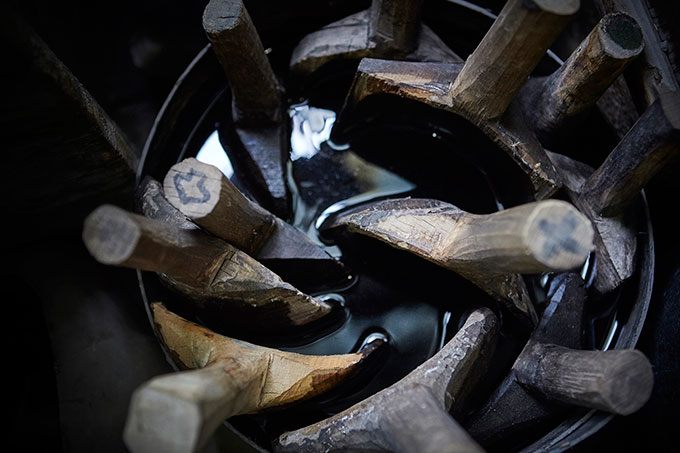
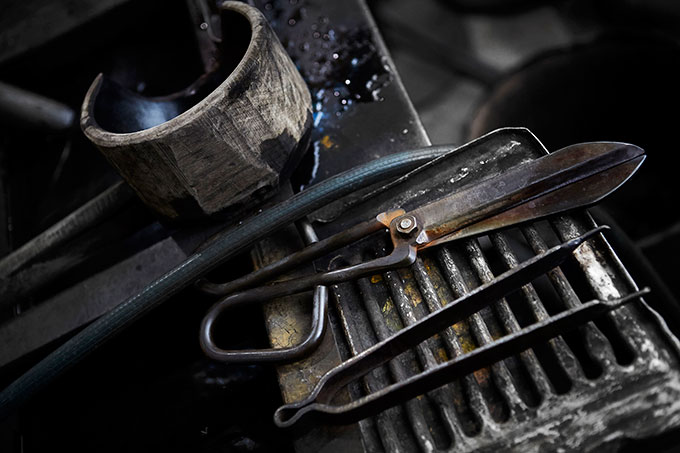
Blowpipes, scissors, and tweezers are the necessary tools of a glass master
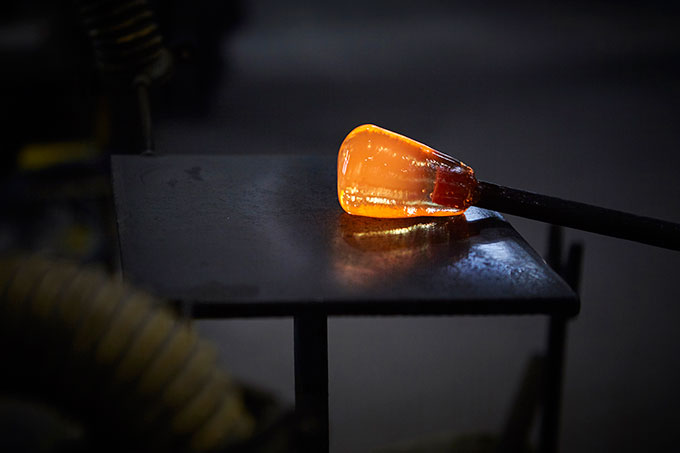
The base of each glass product is a flask, which is blown by a glasspipe
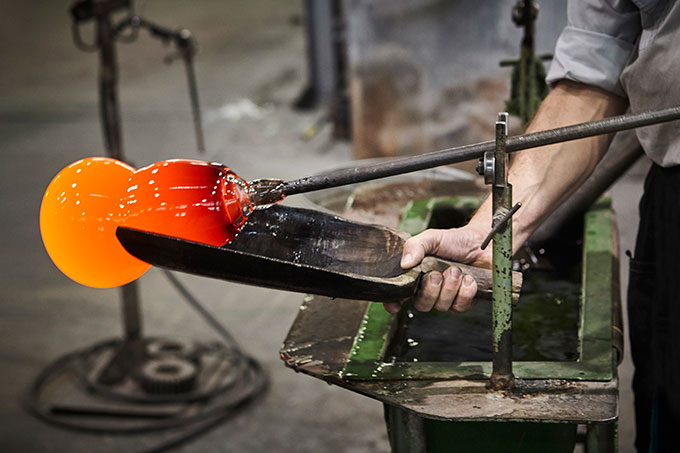
Free-blowing – using several tools to help to achieve the desired shape
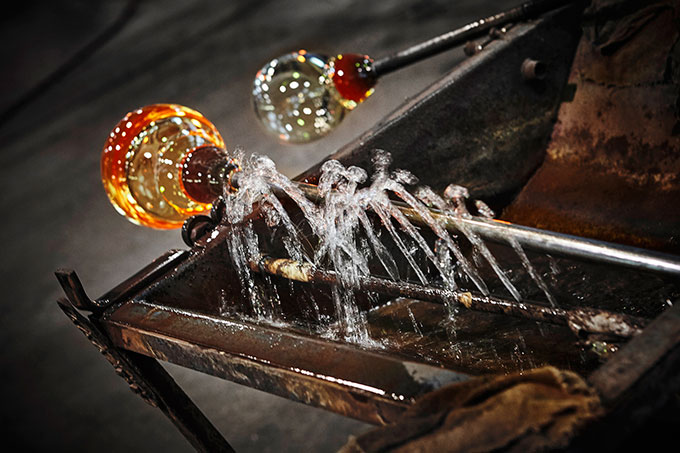
Cooling the blowpipe during the process of forming
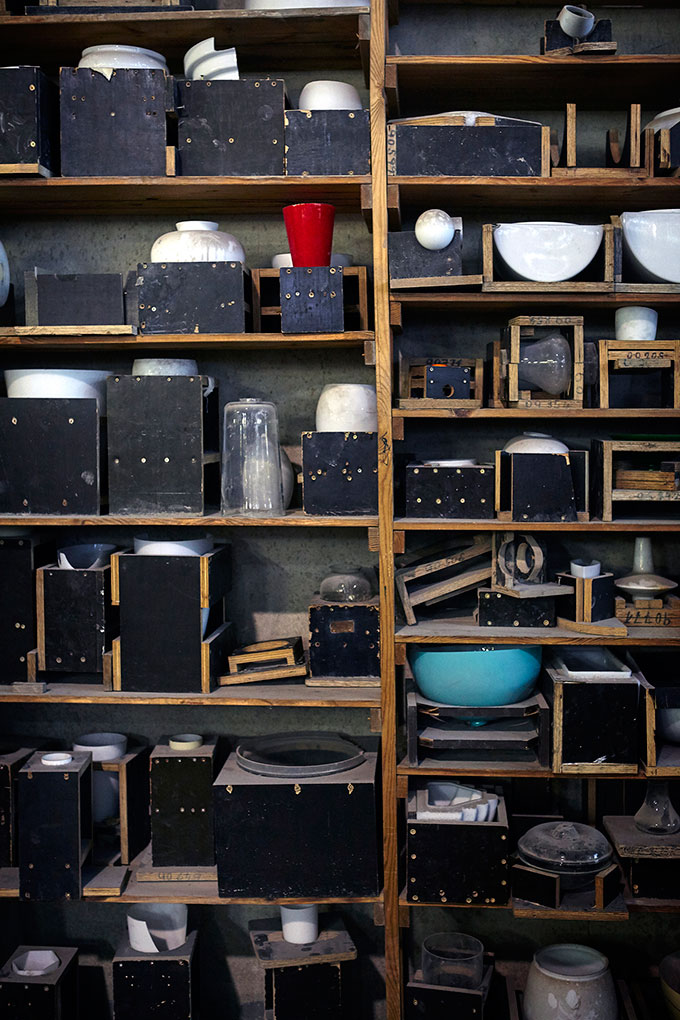
Various molds
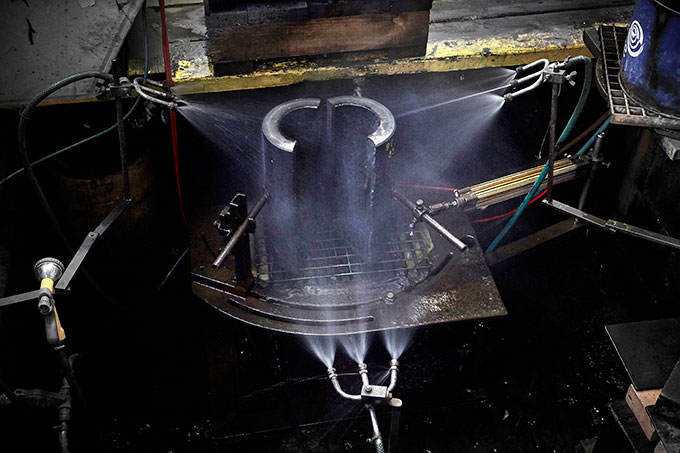
Cooling the mold after use
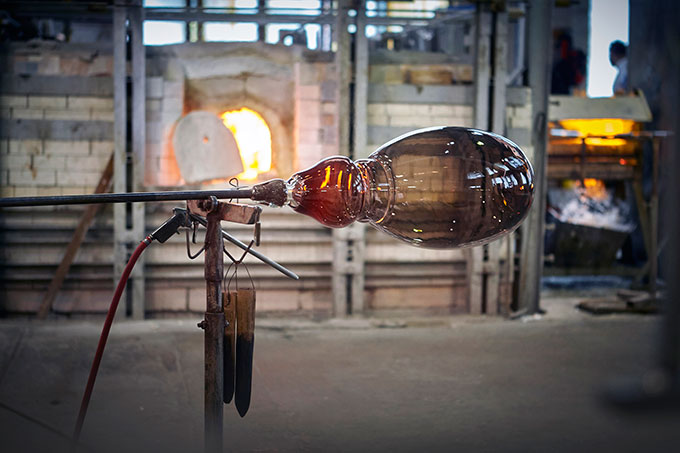
Final product with the cap which later will be cracked off by creating the shock temperature difference.
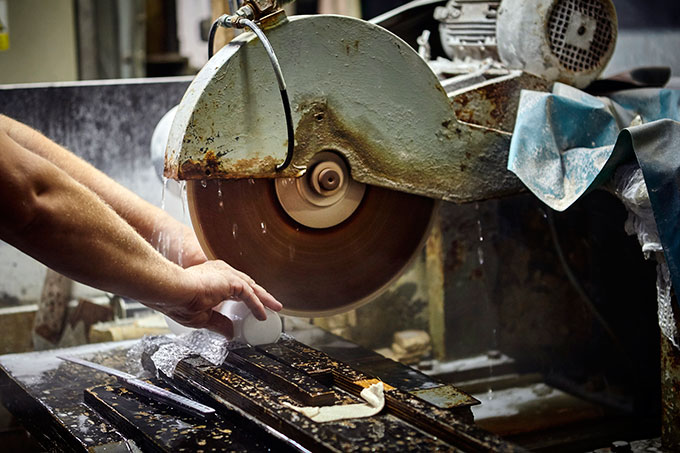
Glass polishing
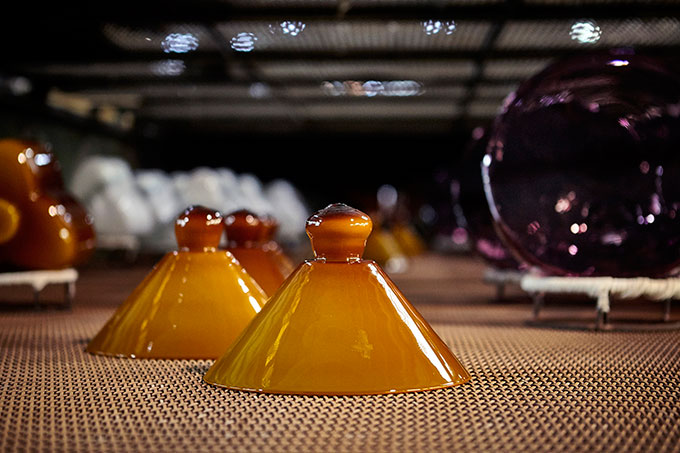
The final products are going through the cooling furnace at a temperature of around 600C. This is to ensure the controlled cooling of glass products and to remove the internal stresses in the material.
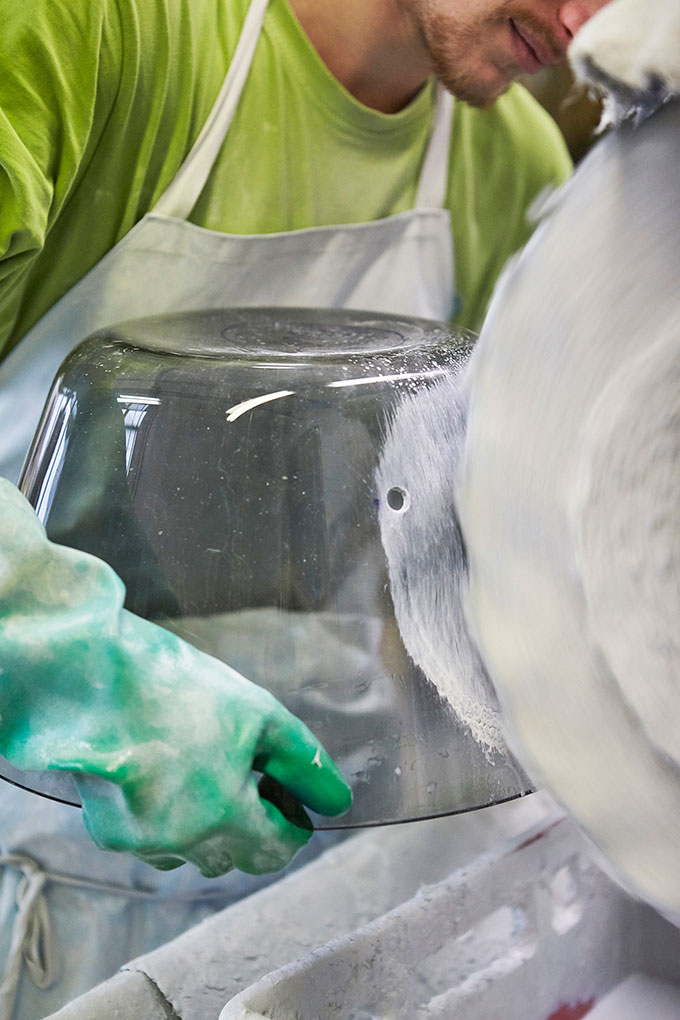
Glass polishing
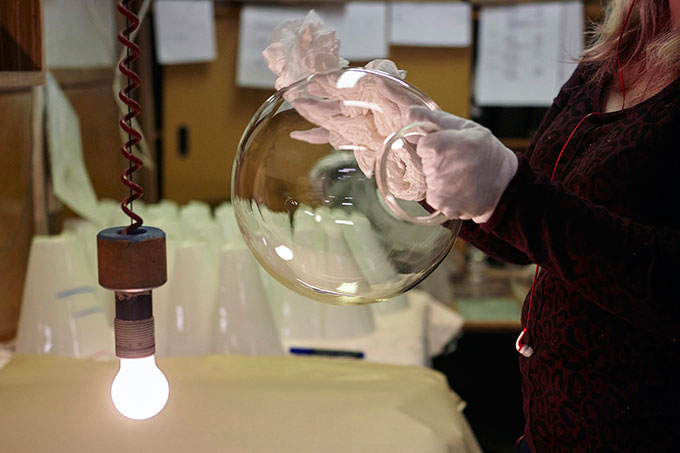
Final inspection and packing of the products
Photos: Dana xbone Hosova
Support us!
All your donations will be used to pay the magazine’s journalists and to support the ongoing costs of maintaining the site.
Share this post
Interested in co-operating with us?
We are open to co-operation from writers and businesses alike. You can reach us on our email at [email protected]/[email protected] and we will get back to you as quick as we can.
